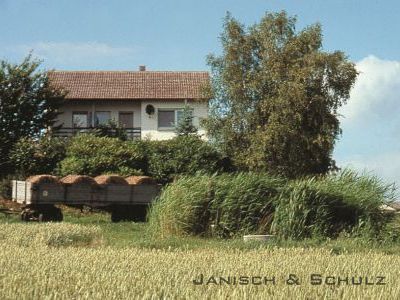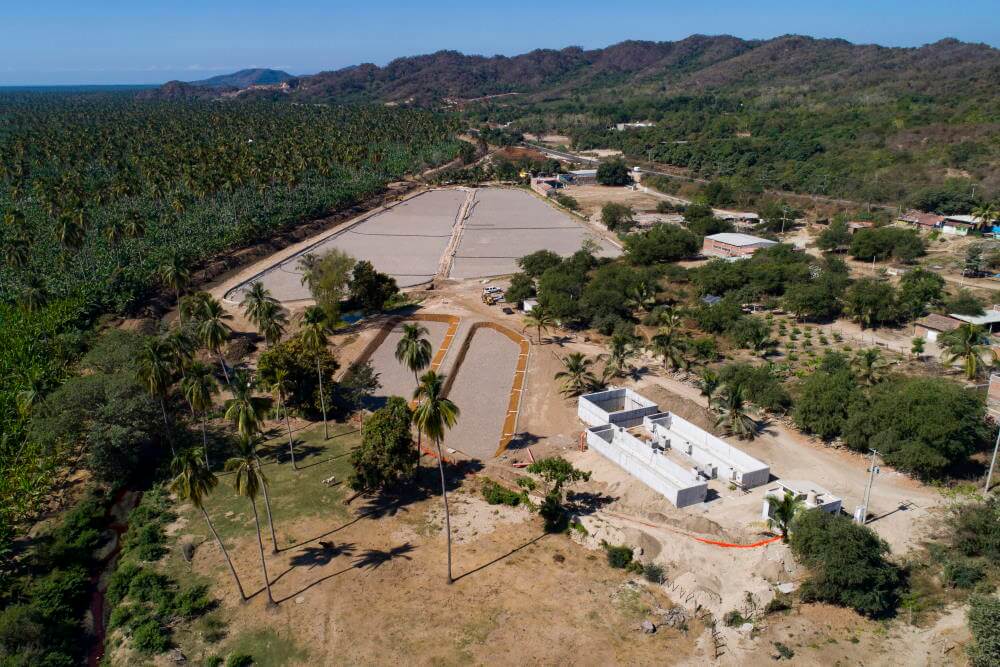30 years of Constructed Wetlands from Janisch & Schulz:
Pioneers of natural water treatment: Once critically eyed, now tried and tested.
Innovation needs pioneers who courageously forge ahead and explore new horizons. This is exactly what happened in the early 1990s in Münzenberg, when two young engineers set out to introduce a little-known technology that was environmentally friendly, energy-saving, process-stable, and required minimal technical components: we are talking about constructed wetlands (CWs). Due to changing legislation at the time, a solution had to be found for wastewater from the outlying farms in the region. Since the cost of connecting to the municipal sewage treatment plant was prohibitively high, the farms were exempted from mandatory connection to the public sewerage system and had to take care of their own wastewater treatment. Alongside the existing small-scale technical sewage treatment systems such as trickling filters and activated sludge plants, newly available constructed wetlands were introduced to the market. Competitors looked at this new technology with some skepticism, expressing concerns about odor nuisance, insect infestations, and the laborious replacement of filter materials. Despite the skepticism and opposition, the young engineers remained steadfast in their conviction and today, 30 years later, they can feel vindicated.
Unbeatable cost efficiency
The first CW, which was commissioned in the summer of 1993, continues to perform exceptionally well, consistently meeting the prescribed limit values throughout the year and functioning without any repairs or replacement parts, completely without electricity. The costs of investment and operation have proven to be unbeatable compared to similar systems over the years of operation. While cost planning 30 years ago was uncertain due to the lack of long-term experience, the positive outcome today is undeniable.
Continuous innovation in natural techniques
Since then, the technology has evolved. The initial systems were horizontally flow-through, whereas today, vertical, intermittently fed systems are predominantly used. In addition, hybrid, two-stage designs offer new possibilities for complex wastewater and increased purification requirements. Today, Janisch & Schulz builds constructed wetlands worldwide for small, medium, and large-scale applications. The largest plant, serving a population equivalent of 20.000, was inaugurated in Cihuatlan, Mexico in 2021. In addition to Germany and Mexico, engineers from Janisch & Schulz are currently working in Paraguay and Argentina to tap into new markets and actively contribute to environmental protection with their natural water treatment systems.
The future? Innovation and diversification
Currently, we are testing a pilot plant of an “electroactive CW” on the Bender family’s farm. This innovative setup not only achieves increased purification efficiency per unit area but also generates electricity! This technology is internationally known as “Constructed Wetland Integrated Microbial Fuel Cells (CW-MFCs).”
The concept behind this technology combines constructed wetlands and microbial fuel cells. In this approach, the non-conductive substrate (sand and gravel) typically found in planted soil filters is replaced with conductive materials such as graphite, coal, or coke. These conductive materials accelerate the biochemical degradation processes while generating bioelectricity. Thus, this new approach not only reduces the land area required by CWs by at least 50% but also has the ability to produce energy. This new approach has been well-documented on a laboratory scale, and now these results need to be verified under real conditions.
We are also taking new approaches on the international stage. In Mexico, since 2019, we have been building some of the largest CWs in the world. In warm regions such as Paraguay and Argentina, we are experimenting with irrigating green roofs with pre-treated wastewater, which allows for water treatment while simultaneously cooling the buildings. The future remains exciting, even for the next 30 years.





